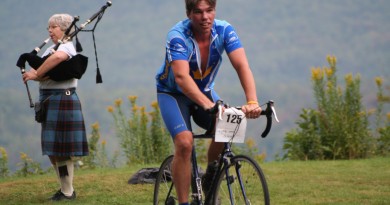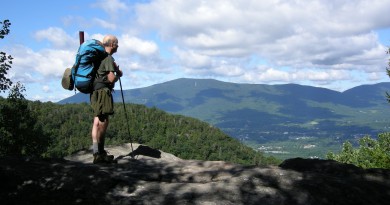Beyond the Marathon
Posted August 26th, 2009
The marathon, 26.2 miles, is steeped in history and lore, stemming from its Greek origins. The Greek soldier, Pheidippides, ran from the battlefield near Marathon to Athens, announcing the defeat of the marauding Persian armies in 490BC. Pheidippides collapsed and died after his announcement and historic run.
In 1896, the legend of the warrior was revived with the first Olympic Games held in Greece. The distance in this first Olympic Marathon from Marathon Bridge to the Olympic stadium was 24.8 miles. One of the runners in this first event was an American from Boston, Arthur Blake, who dropped out, exhausted, at 14.5 miles, because he had competed just days before the marathon in a 1500-meter race, taking second place. He was, however, inspired, and brought the idea of the marathon to the Boston Athletic Association.
The very next year, on April 19, 1897, the Boston Marathon was born to commemorate the ride of Paul Revere. The distance was once again altered by about 250 meters. It was not until the 1908 Olympics that the standard marathon distance of 26.2 miles was cast in concrete and history, when the distance was again changed to accommodate a finish at the royal box of King Edward VII.
In the early 1920s, Harvard Fatigue Laboratory began research on human fitness, which has continued to this day on the runner. The 26.2-mile distance has become synonymous with fitness and attracts millions of people worldwide to train for the marathon.
THE ULTRAMARATHON
Any distance greater than the standard 26.2-mile marathon is considered an ultramarathon. The history of the “ultra” is not as clearly defined as the marathon. In 1867, Ed Payson walked from Portland, ME, to Chicago, IL, in 25 days, and this may have been the beginning of ultra distance races, because later, another noted pedestrian, Dan O’Leary, challenged Payson to a series of distance events taking place over six days. The father of ultramarathons, however, is considered to be Ted Corbitt, who popularized the London to Brighton ultramarathon. As the running and fitness craze swept over the land in the 1970s and ‘80s so did ultra running. How far could the human body be pushed? Races begun to pop up all over the world, and the sport of ultra running was truly born.
ENTER THE VERMONT 100
This race was conceived 21 years ago and remains the only event in North America that includes an endurance horse ride as well. The Vermont 100 is part of what the ultra running world calls the Grand Slam. Competitors in the Grand Slam must complete four 100-mile races in the United States within a 16-week period. The races are California’s Western States 100 in June, the Vermont 100 in July, Colorado’s Leadville Trail 100 in August, and Utah’s Wasatch Front 100 in September. Race competitors must complete each event in less than 30 hours to receive the coveted medals. Training is tedious, time consuming, and difficult. Athletes risk overuse injury anytime. Typically, the ultra runner will cover 80 to 100 miles per week of running year round. This distance is not all that different than how the elite marathoner may train, but the ultra runner will move at a slower pace, and this alone will put less stress on the muscular-skeletal system.
HEALTH
The non-running community logically asks, “Is all this running and associated body stress healthy?” Statistics in the United States alone demonstrate that there are over one million arthroscopic knee surgeries performed annually. The number of runners included in this number is negligible. Most knee injuries are indeed caused from overuse, but usually in the non-fit, overweight population. From Harvard Fatigue Laboratory to today’s sophisticated Cooper Institute in Phoenix, AZ, studies and records have aptly demonstrated that runners are among the most fit people in the nation.
RACE DAY MEDICAL NEEDS
This year, the Vermont 100 had 235 runners scheduled to cover either 100 miles or 100 kilometers. Everyone started the weekend with a weigh-in and medical check. The race began at 4:00 a.m. Saturday morning and the athletes were all hoping to finish in under 30 hours. The Gifford Medical Center of Randolph, VT, manned three medical tents with volunteer doctors, nurses, OR techs, and equipment. Each runner had to stop for a brief exam and weigh-in at 42 miles, 70 miles, and 90 miles, where medical care was available. The Gifford Medical team attended to athletes more than 300 times, with care for blisters, tendonitis, hypothermia, urinary retention, and fatigue. This detail to attention and care assured that the ultra runners completed their race safely and in good health.


